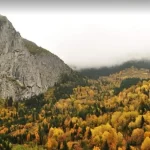Mount Shishapangma
Mount Shishapangma is the 14th largest mountain in the world and is located within the borders of China (Tibet). 5 km from the Nepal border. away. Its Sanskrit name is Gosainthān. There are many different opinions about what the name of the mountain means. There are those who say it means “On Grassy Plains”, there are those who say it means “Dead animal flesh”. According to a legend, a year of heavy snowfall kills animals in the plain and people have to eat their frozen meat for a year. Gosaithan means “Holy Place”, “Saint’s Place”.
It is the least inclined and therefore the easiest mountain to climb among the 8,000-height mountains. Its height is 8.27 meters. (However, it is given as 8013 meters in many sources.) The classical routes are the northern routes and it is possible to reach the base camp at 5,000 meters by car. The southern route, on the other hand, is a difficult and technical route of 2,200 meters with a slope of 50 degrees.
Climbing Mount Gasherbrum II in History
The first ascent of the mountain was made from the North face by a 10-man Chinese team on May 2, 1964. The south face was first climbed in 1982 by British climbers Doug Scott, Roger Baxter, Jones and Alex MacIntyre.
A total of 29 climbers have died in accidents on Shishapangma mountain to date.
Climbing Mount Shishapangma
Despite being less popular than other high peaks, Mount Shishapangma is a popular destination among mountaineers due to its impressive natural beauty and surrounding landscapes. However, climbers require appropriate equipment, experience, and preparation to avoid natural hazards.
Shishapangma is also important for Tibetan culture and considered sacred by Tibetan Buddhists. The mountain’s summit is considered an important pilgrimage site, especially for Buddhists in Tibet and Nepal.
The mountain of the mountains, Mount Ararat may also interest you. Please click to read.





